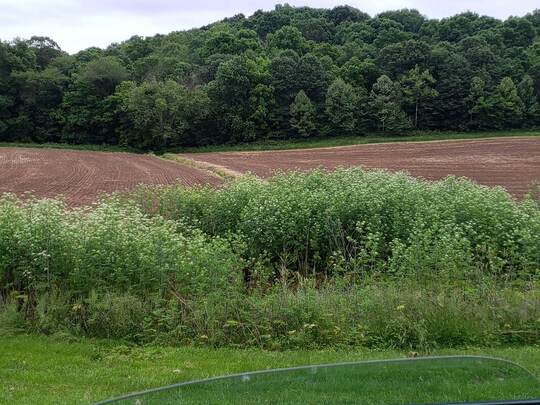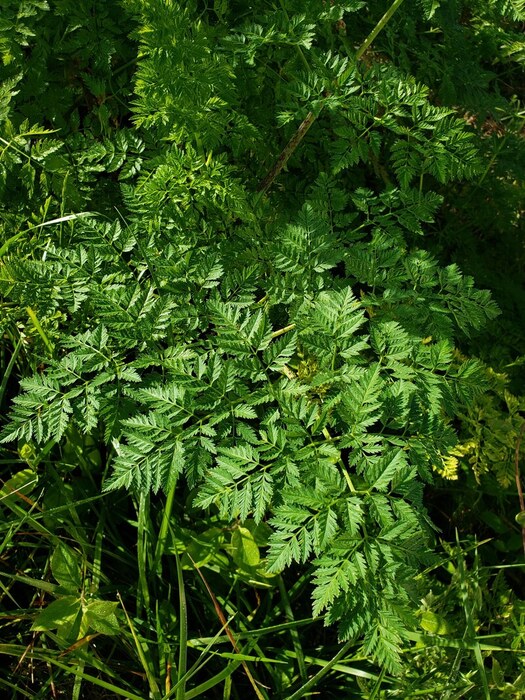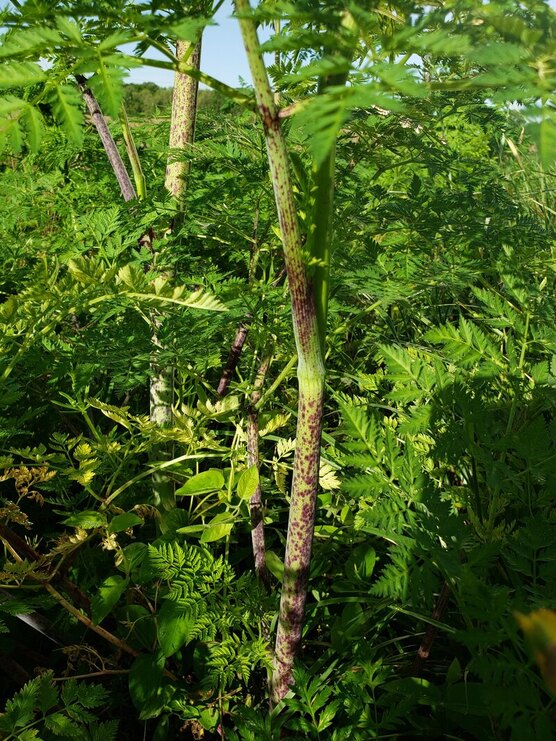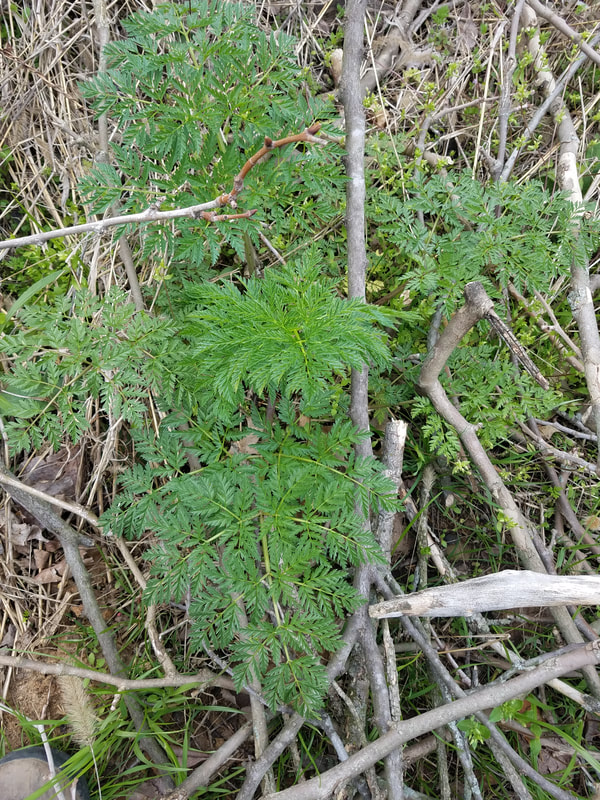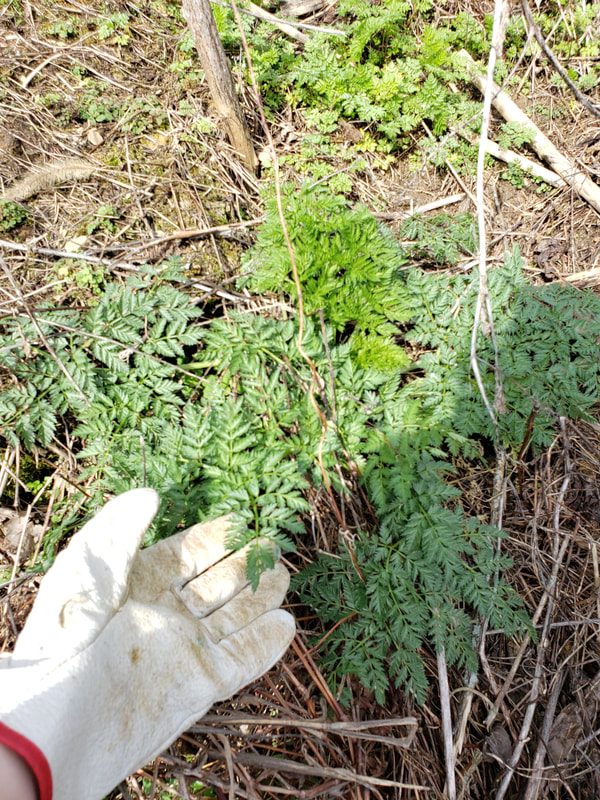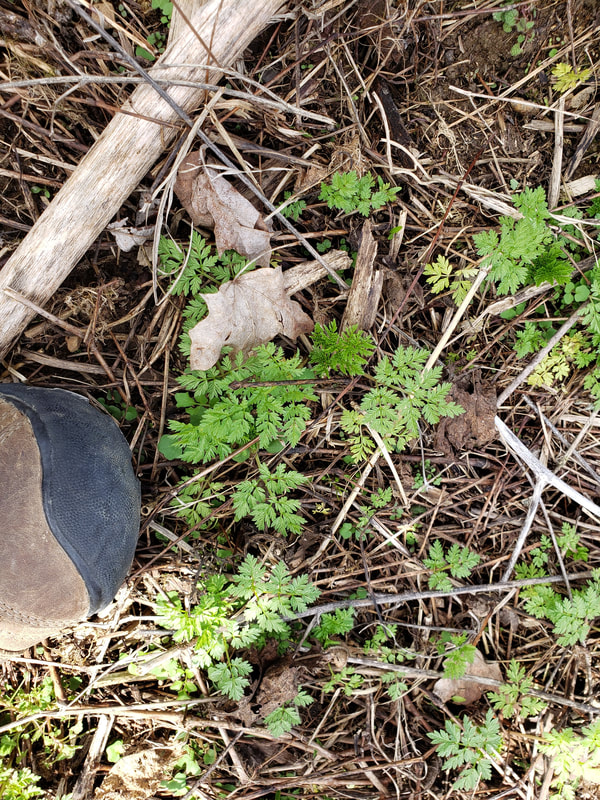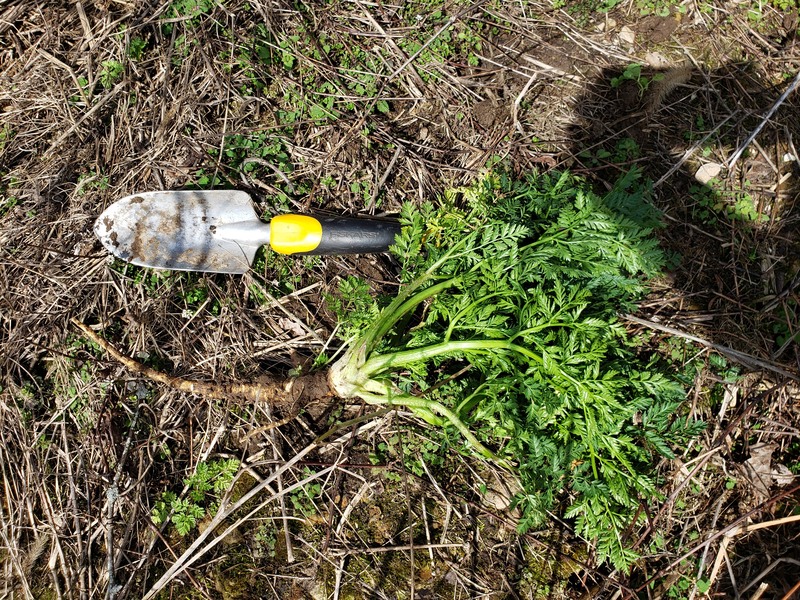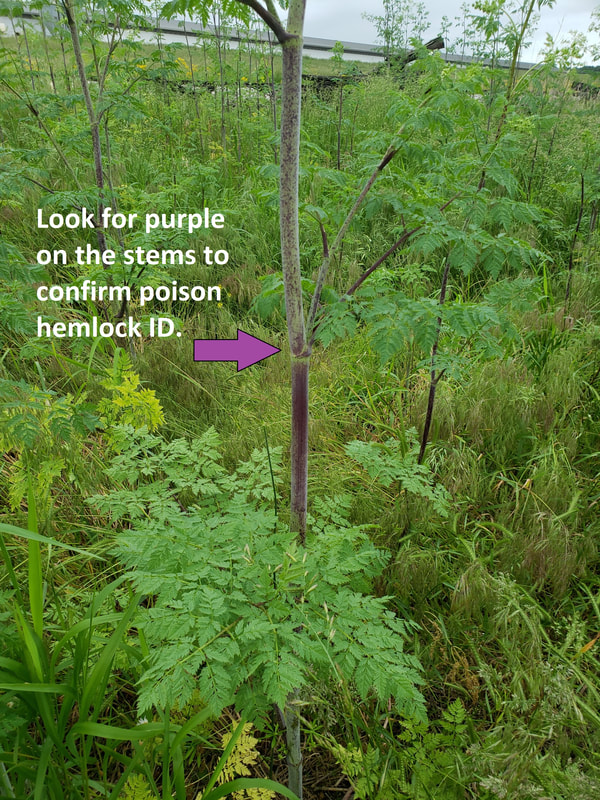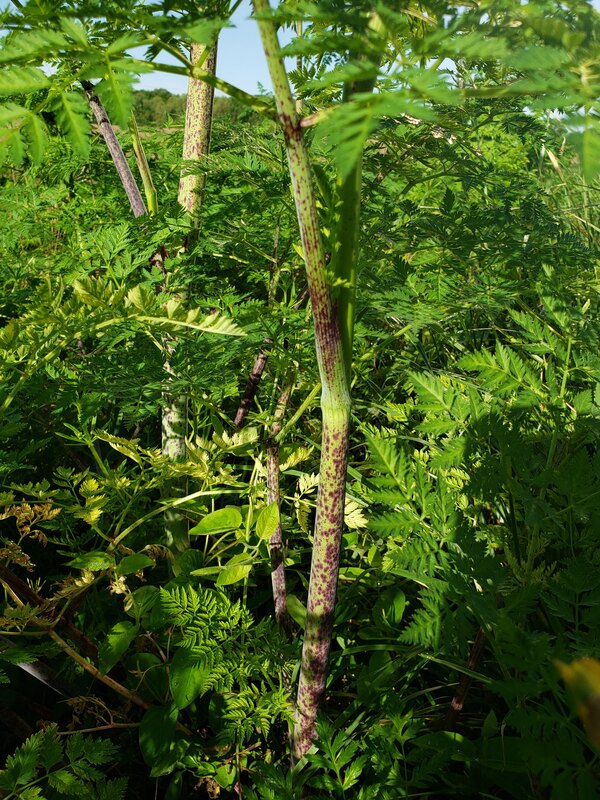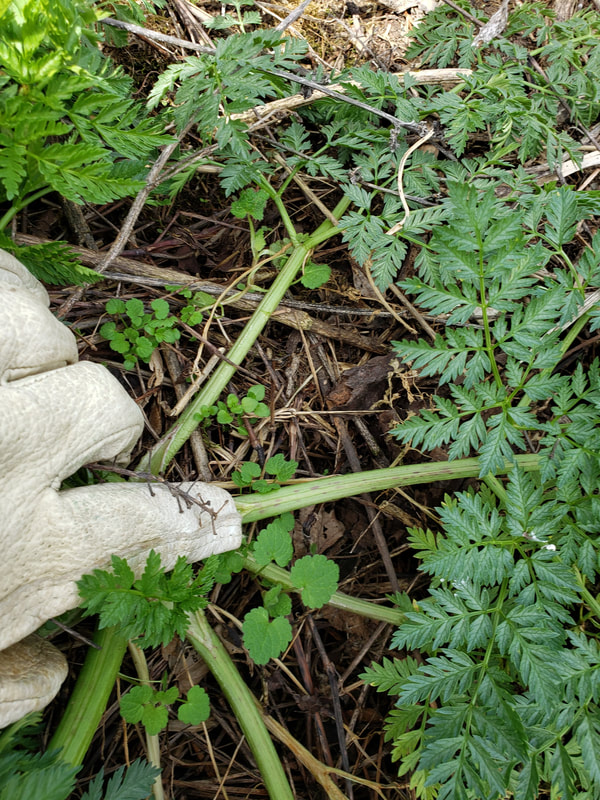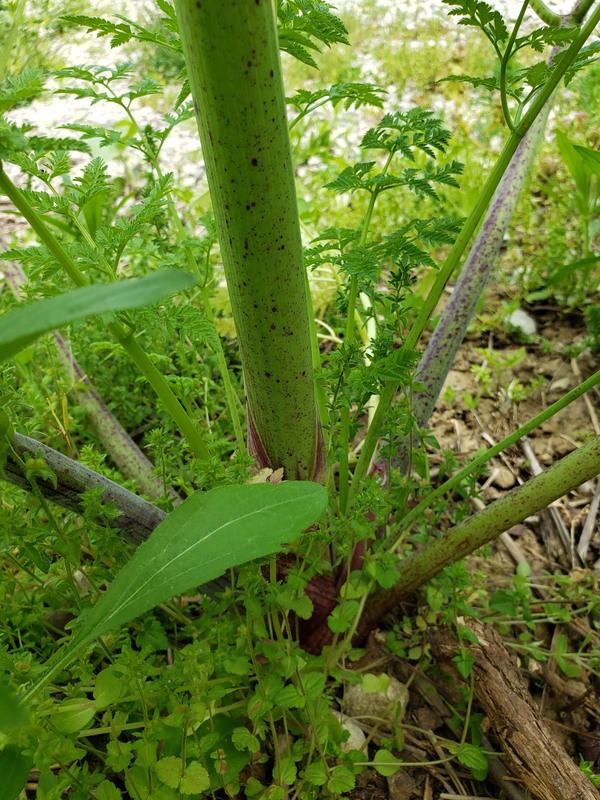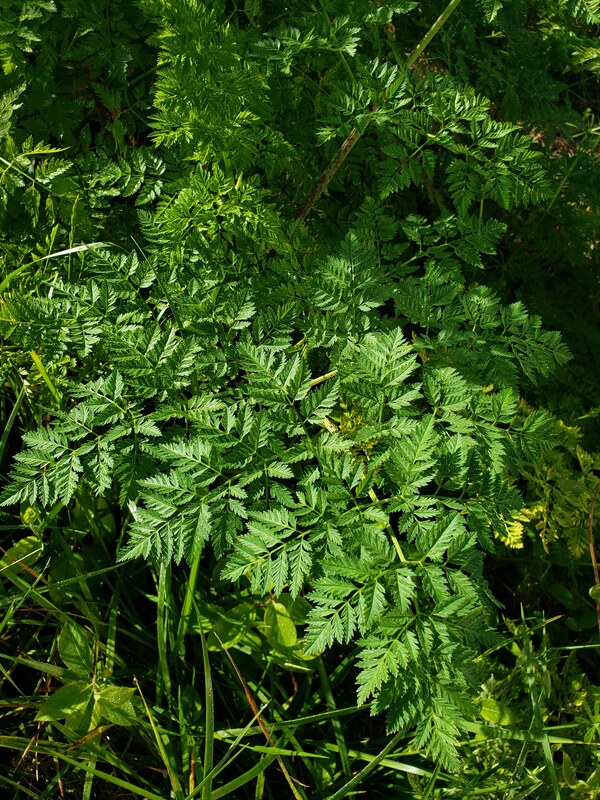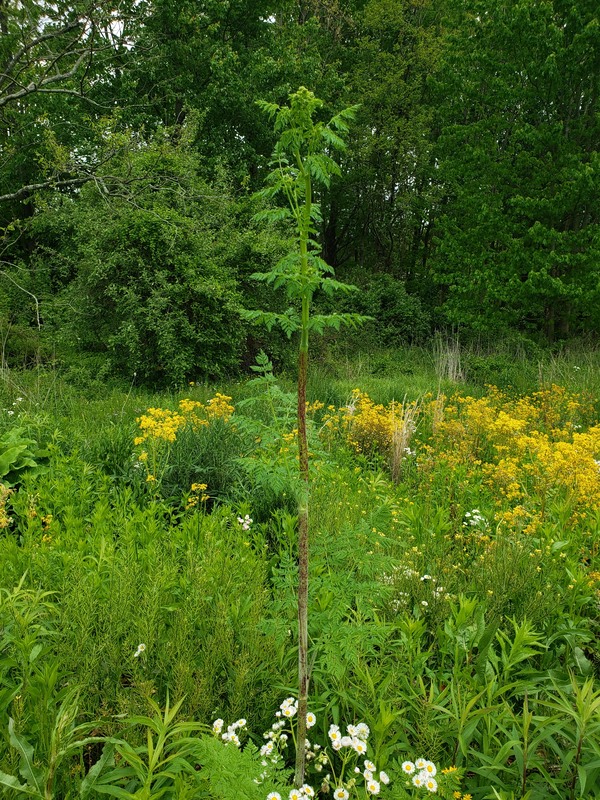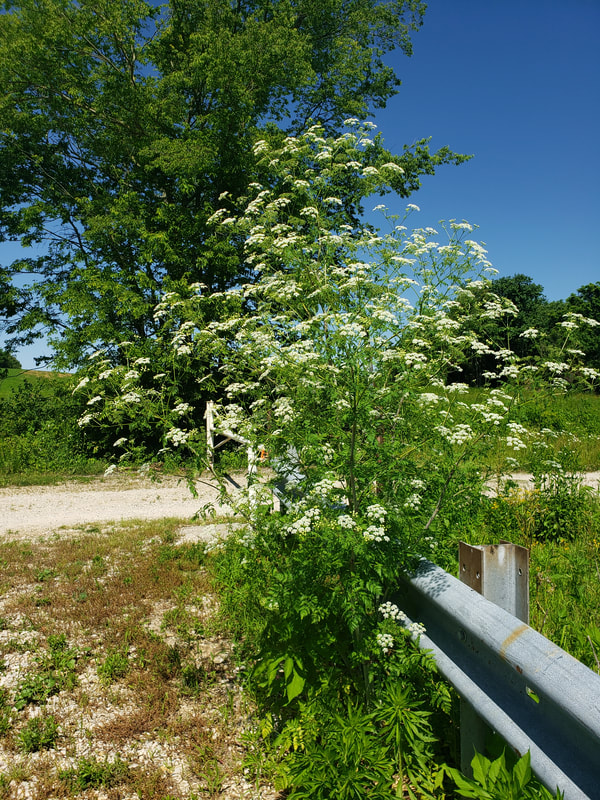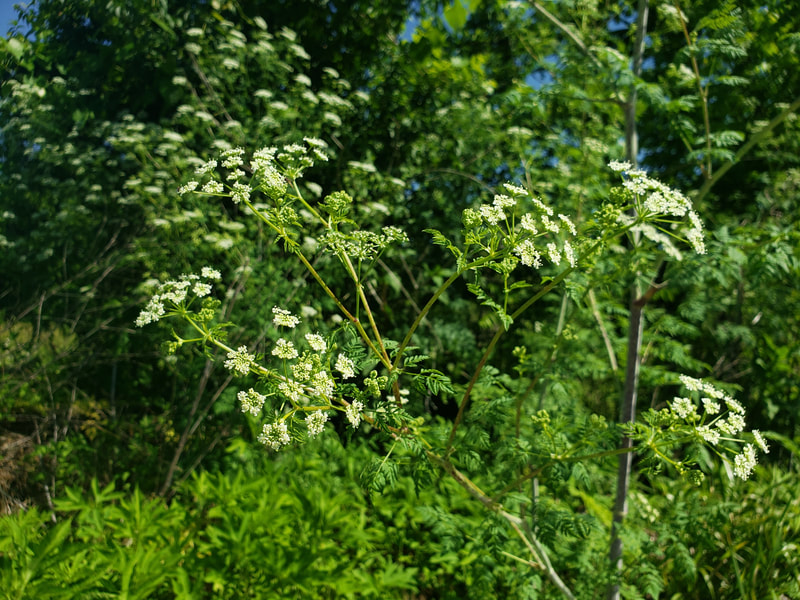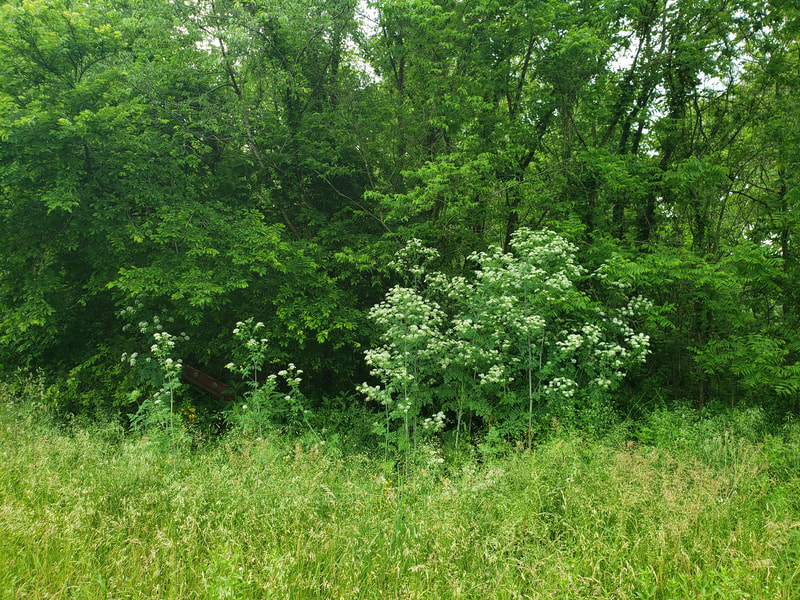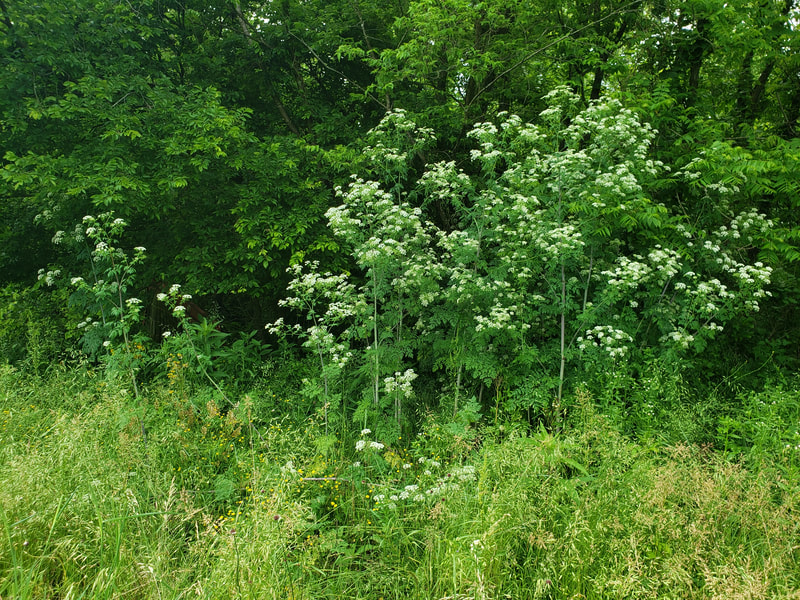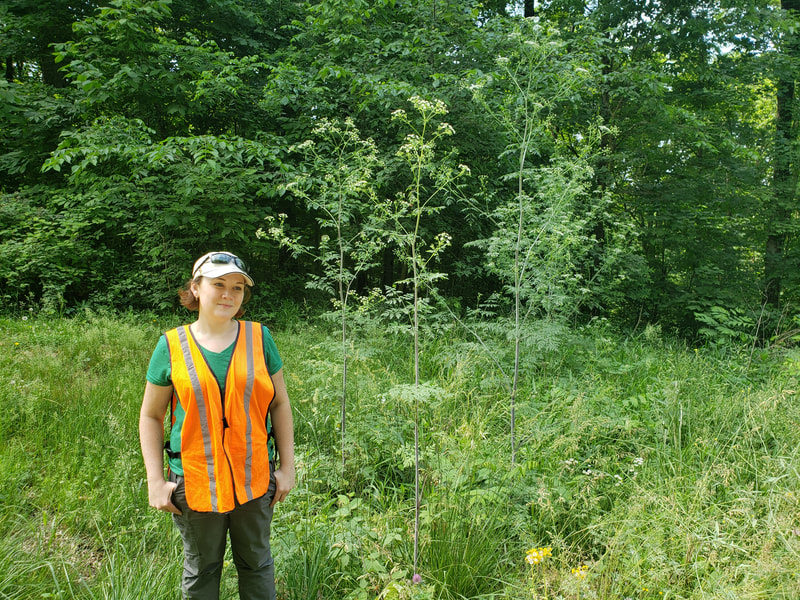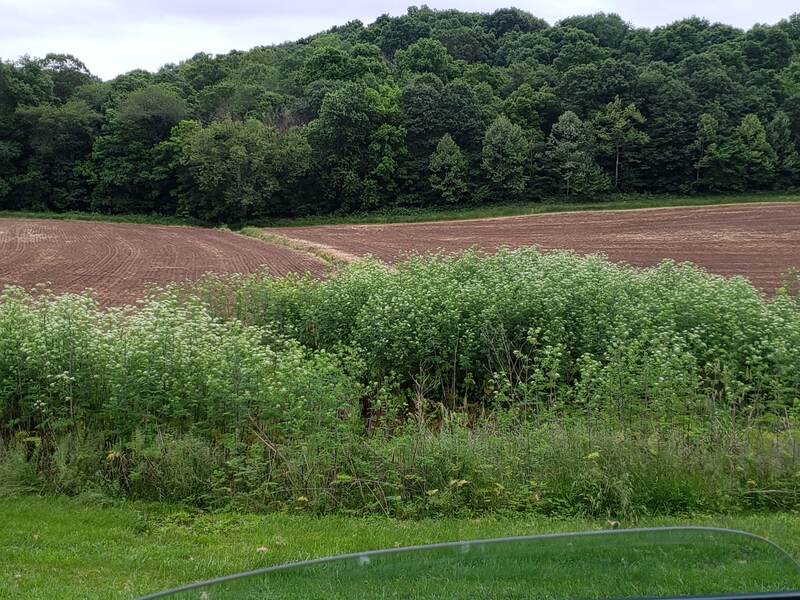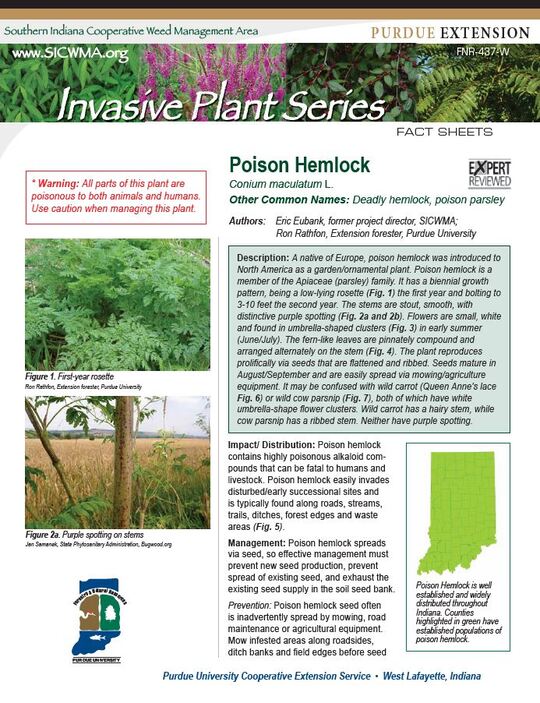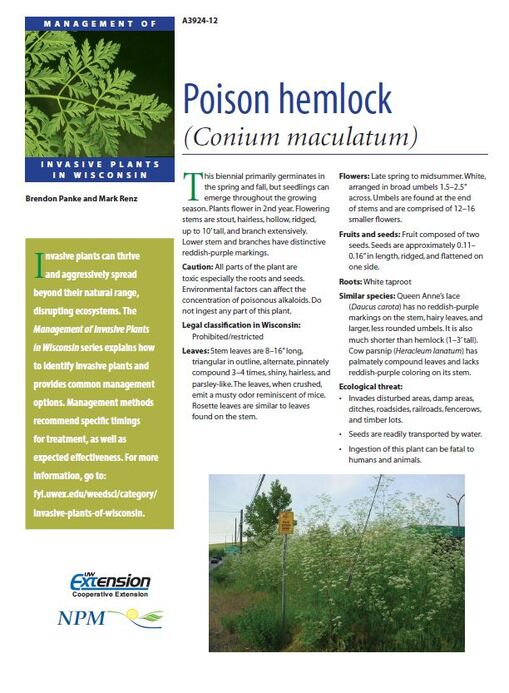Poison Hemlock (Conium maculatum)
Poison Hemlock is one of the noxious weeds of most concern in Dubois County and is considered highly toxic to people. livestock and pets. It is also classified as Highly Invasive by the Indiana Invasive Species Council and a Prohibited Invasive Plant by the DNR Division of Entomology & Plant Pathology.
Scroll down for more information on Poison Hemlock, including handouts and videos. Or click here to learn more about Indiana Noxious Weeds.
Scroll down for more information on Poison Hemlock, including handouts and videos. Or click here to learn more about Indiana Noxious Weeds.
|
Poison Hemlock
Under control or out of control? You’ve probably seen it on the sides of roads, field edges, and creeks. Toxic to livestock and humans, classified as an invasive plant and a noxious weed, the infamous Poison Hemlock (Conium maculatum). Everyone seems to agree that Poison Hemlock needs to be controlled, so why is it that these plants seem to be spreading further instead? Why can’t we get poison hemlock under control? Well, that is the goal of the Dubois County Weed Board and the Dubois County Soil & Water Conservation District (SWCD). We’ve noticed the rapid spread of Poison Hemlock in the region and want landowners to know exactly how to control Poison Hemlock. According to Emily Finch, Invasive Species Specialist with the Dubois County SWCD, while several landowners spray Hemlock plants, very few of these treatments are effective in controlling hemlock. That’s mostly because Hemlock needs to be controlled earlier in the year, before plants even flower. To understand why, you have to understand the weed. Poison Hemlock is a biennial, meaning it only lives for two years before producing seed and dying. The only way to eliminate infestations is to prevent that seed production. Hemlock plants start as a short basal rosette with fern-like leaves. Then, in their second year of life, plants will send up a flowering stem, also called bolting, in spring/early summer (around May/June in southern Indiana). These flowering plants can be quite large, anywhere from 3 to 10 feet tall. Because Hemlock is in the carrot family, it produces abundant umbrella-shaped clusters of white flowers, often compared to the flowers of Queen Anne’s Lace, aka wild carrot. To help distinguish the plants, remember that Hemlock blooms before Queen Anne’s lace, lacks any hairs on its stems/leaves (a common feature of Queen Anne’s Lace), and has distinctive purple splotches on its stems and often the base of large leaves as well. There are a few options to control Poison Hemlock, so long as plants are not allowed to flower and produce seed. In fact, Hemlock seeds have a very short duration in the soil, and many populations can be eradicated with just a few years of effective treatments (a short timeframe for most weed control). Small populations can be removed by hand, either digging the plants up or severing the root with a sharp shovel (wear gloves to avoid contact with plant toxins). Cutting/mowing the plants is NOT effective unless repeated regularly through the summer as plants will resprout readily. In fact, mowing after plants have produced seed is one way infestations have spread through the area. Herbicides are the most efficient way to control large areas, and several chemicals are effective, including glyphosate, triclopyr, and 2,4-D products. All of which also come in aquatic safe formulations for use near open water creeks and ditches. Whatever product you choose, make sure to read and follow all label directions. According to Finch, the earlier you can spray Hemlock, the better! “Spring planting is a busy time for everyone, so why not avoid that and spray your hemlock plants in February or March instead? The Hemlock rosettes are green that time of year, plus the plants are smaller so you’ll use less herbicide.” says Finch. For best results, she suggests only spraying on days above 50 degrees. Wait longer and you may run into problems. As Hemlock plants start bolting and prepare to flower, they also get harder to kill. If herbicide rates aren’t increased when spraying these plants, they may only be knocked back or stunted temporarily. And according to Kenny Eck with Purdue Extension Dubois County, once they flower there is no point in spraying them. “Spraying a flowering Hemlock plant is just a revenge killing. It makes you feel good, but it does nothing to control it as it will still go to seed.” says Eck. He recommends checking out options in the Purdue Extension/SICWMA publication “Poison Hemlock.” (See publication below.) Residents of Dubois, Daviess, and Martin counties can also receive free technical assistance, including site visits to their property, by emailing [email protected] or calling 812-482-1171 x3. |
Dense Poison Hemlock stand in full bloom.
Photo taken by Emily Finch in Dubois County. Poison Hemlock leave resemble fern leaves.
Hemlock can be distinguished from Queen Anne's Lace by it's larger size and lack of any hairs on the leaves or stems. Photo by Emily Finch. Poison Hemlock has smooth stems and irregular purple splotches that helps distinguish it from other plants. Photo by Emily Finch.
|
Browse Poison Hemlock Photos
Poison Hemlock ID & Control Handouts
Poison Hemlock Video Series
|
|
Invasive Poison Hemlock is best controlled in winter and early spring when plants are rosettes, before bolting and flowering. Watch this video with Invasive Species Specialist Emily Finch to learn how to identify and control this invasive.
|
|
|
When Poison Hemlock plant bolt in May in Southern Indiana, it is your last chance to control them before flowering. Watch this video with Invasive Species Specialist Emily Finch to learn more about controlling Poison Hemlock this time of year.
|
|
|
Invasive Species Specialist Emily Finch demonstrates how to control poison hemlock once it has already flowered.
|
